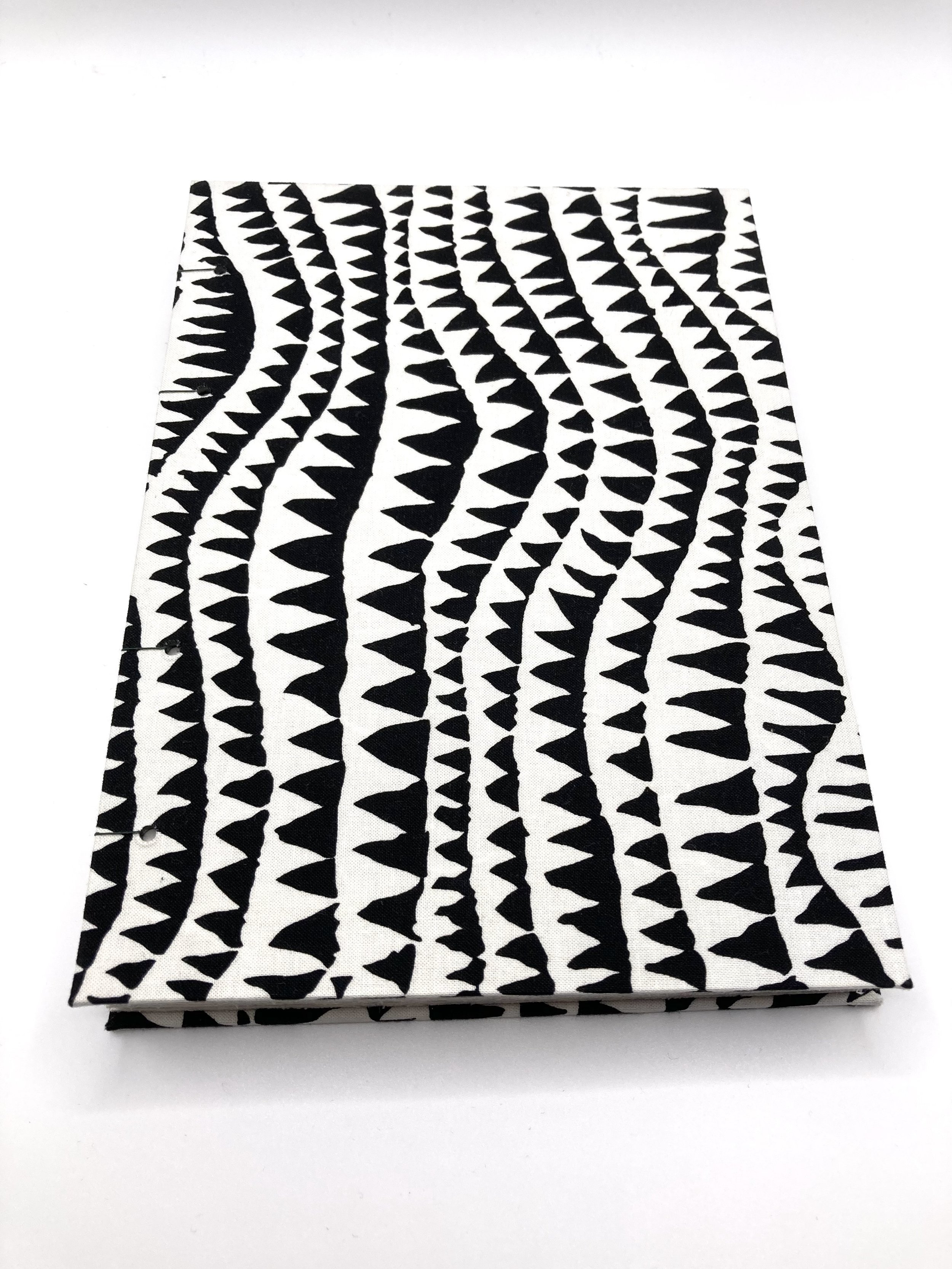It would be ideal for someone who gets excited about unique stationery, who keeps a journal or just loves a list. We all have someone in our lives who is obsessed with stationery - if you don't have one, perhaps that person is you!
Lokta paper has been made in Nepal for over 1000 years and is a sustainable product. The bush from which the raw material is taken regenerates to it's full size over five to seven years. As it is a natural product, you can see and feel the fibres of the plant in the paper and this gives the book a wonderfully tactile texture, while being long lasting. The patterns are hand printed onto the papers by the producers in Nepal. Historically, lokta paper was used for government documents and religious texts in Nepal - the oldest surviving lokta is estimated to be 1000 - 1900 years old - but it's use is now more widespread, for example, menus, packaging and even wallpaper!
The book is hand stitched using coptic stitch, giving the impression of plaits across the spine of the book, which you will be able to see in the photo. The stitching is delicate, but strong. Coptic stitching was first used by Christians in Egypt (the Copts) between the 2nd and 11th centuries AD. This type of stitching allows the book to lay completely flat. It is worth noting that this also means there is some movement around the spine of the cover boards; however, this does not imply a weakness in the book! Without this movement, the book would not lay flat, so I never attempt to overcome this with glue or other methods.







































